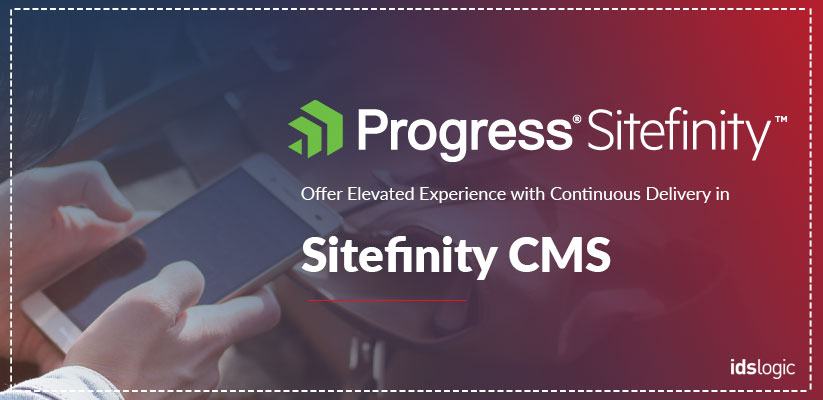
Offer Elevated Experience with Continuous Delivery in Sitefinity CMS
Getting a software or an application released for the users can often be a painful, risky and a time consuming task. Continuous delivery helps big organizations to become lean, agile and innovative.
It is through a reliable and low risk releases that continuous delivery makes it possible to quickly and continuously adapt software in the line with changes to the business strategy, user feedbacks and shifts in the market.
Today, CDM is a new approach offering both a governance structure and transparency to manage continuous deliver across big software enterprises.
What is the Purpose of Continuous Delivery?
The core purpose of CD is to quickly deliver the extensions and customization of the project to production, without having any downtime, without any need to manually merge the configurations and without interrupting the work of the live environment.
The main goal of the process is that after every development, you will end up with the same setup with which you started, the code is same on all the environments and the latest database is also on the live environment.
Static Website Is Dead! Use Sitefinity CMS for Website Personalization
Frequent changes in the website are often difficult to manage without a continuous delivery process to simplify the delivery of multiple site updates and to automate. Fresh releases have a smooth flow from development to production while maintaining the configurations and the content in sync.
Whether the application is hosted in a load balanced or cloud environment or on a single server, Sitefinity can automate the deployment and delivery process.
Usually a Continuous Delivery Process has the Following Environments:
Development Environment:
This is where you develop your project and it is any integrated source control system where you extend, develop and configure your project and build it and carry out unit tests and integration tests.
Test Environment:
This is the environment where you run the tests like UI automation tests security and performance tests. You cannot change the code in this environment, but you can change the test.
To perform the tests, you can delete or create the content and in case you have to fix something in the code, you have to go back to the development environment.
Live Environment:
This environment displays your public website. Here the backend users can create content, change the runtime settings, manage websites, but cannot change the configuration and the code of the project. This is where frontend of the site is accessible to the public users.
Managing multiple environments is a daunting task and when they are out of sync, you have the risk of delayed releases and also frustrated teams. Sitefinity CMS environment configurations are file based and are managed via the transformations.
The application configurations are stored in the database and are synced automatically between the environments that help to:
- Ensure that all the nodes share the same configuration that reduces the downtime.
- Simplify the user roles regarding who should manage the settings across the environments and consider the changes that has to be pushed across environments effectively and quickly.
“With Sitefinity’s latest release, all the essential functionalities that cover the continuous delivery process are now easily available. The first step that you should take is to identify the scenario and the number of environments that you need.”
